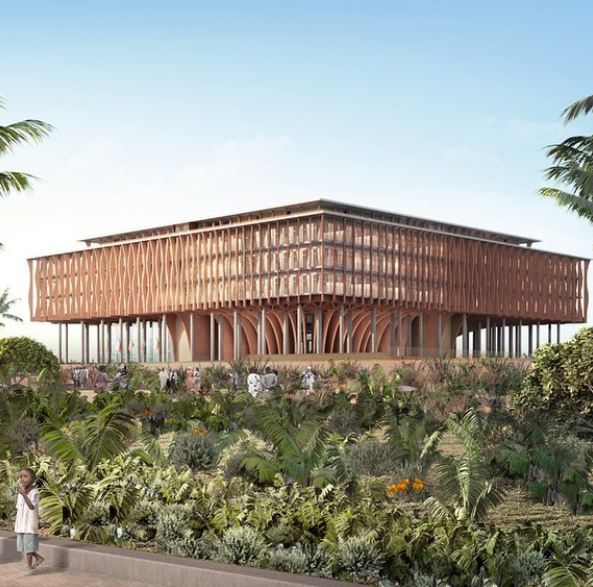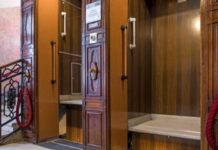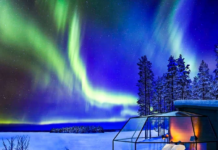Around the world there are many buildings or public spaces that are inspired by natural shapes, celebrating the philosophy of Nature, universally known as the best Architect we have close to us.
In an imaginary journey around the globe, let’s see what are and where are the structures conceptually most related to the territory that hosts them, or who are their inspired designers. Some of the buildings are new, others are just waiting to be opened, all are realized in the shape of a tree or a forest.
Whatever the intended application of the building is, Archistars have brought nature into urban spaces, following fractal geometries and tree-shaped structures: in a word, biomimicry
TREE SHAPED BUILDINGS: will they be the future for your city as well?
# The trees by Diébédo Francis Kéré, endless inspiration
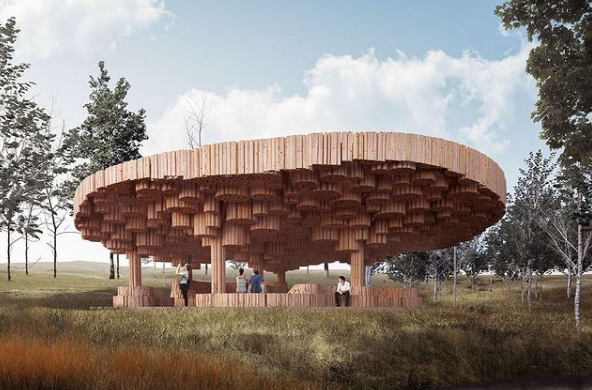
Trees and forests are the main focus of inspiration for Diébédo Francis Kéré, an Archistar from Burkina Faso.
His Instagram page is there to attest to this connection: the tree as a meeting point for the African community, as a center for conversation, a market or simply a shady rest time.
All the characteristics that have been recreated with his opera in the Serpentine Pavilion, a structure made with a steel core, covered by a canopy-like roof made from wooden slats covered from transparent skins, which filters sunlight but offers shelter from the rain, bringing the tree of the African savannah to the city.
Spectacular realizations by Francis Kéré are also the ones for the Coachella festival (California), the Tippet Rise in Montana (U.S.A.) and – above all – the National Assembly of Benin building, a majestic biomimicry forest inspired from palaver trees, whose completion is expected in 2023.
# Budapest Concert Hall, Sou Fujimoto
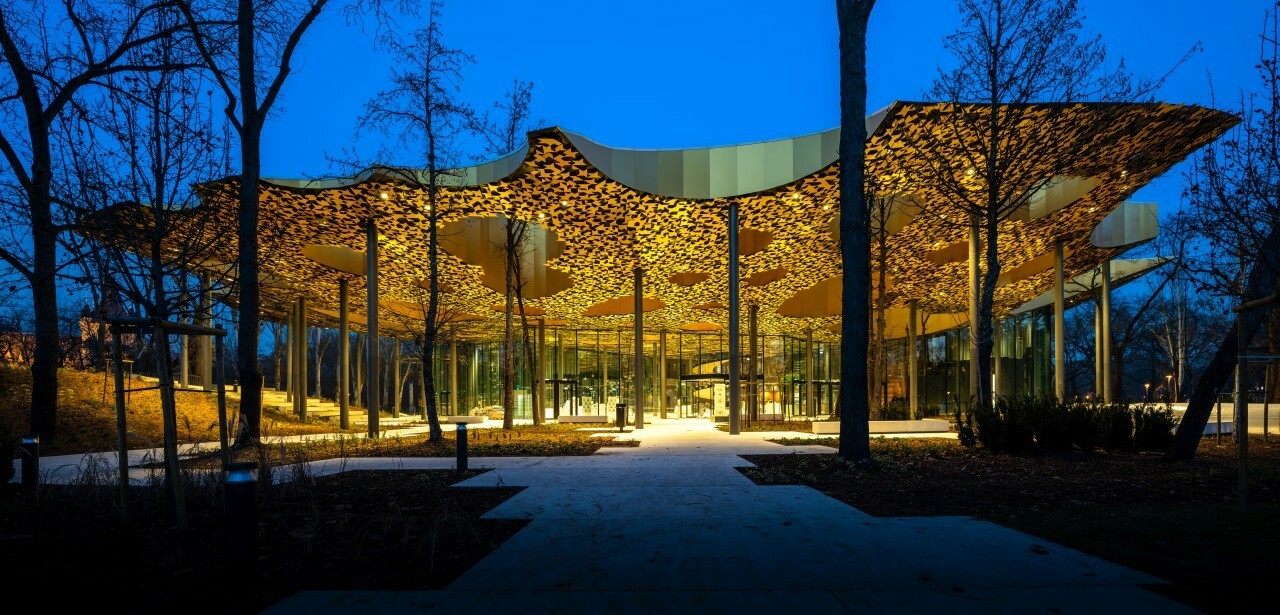
Not only trees enlighten the work of Japanese architect Sou Fujimoto, but certainly forests and zen gardens are a great inspiration for him.
Recently invited to design the Concert Hall in Budapest City Park, Fujimoto looked around and designed it by blending it into the centuries-old forest by which it is surrounded.
A series of vertical steel poles reproduce the trees’ trunks supporting a overhanging roof, which in the lower part is covered with metal “leaves” that give it “digital-like” effect. This texture of the entrance continues into the interior and provides a continuum between the spaces when moving from the outer to the two indoor concert halls.
The outdoor structure, in addition to being the business card of the new halls, is also an open space to enjoy the music in open air mode.
# Calatrava’s Fractal Geometries in Toronto
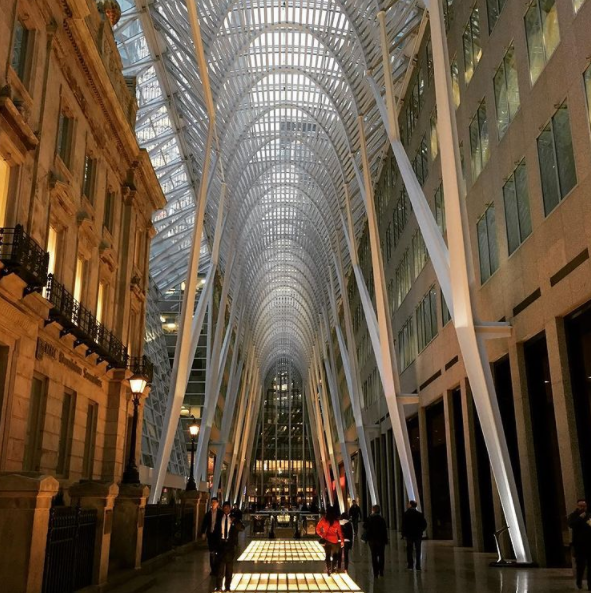
Santiago Calatrava was greatly inspired by fractal geometries. The design of the Allen Lambert Gallery in Toronto is a tribute to a Canadian country avenue bordered by rows of maple trees, simulated with a structure made entirely of steel and very high up finished by transparent glass windows.
The white metallic forest accompanies the covered space are compliant to Municipality of Toronto’s criteria dictated for urban and artistic works, and the “foliage” is reproduced at the top, when the light filtered by the glass windows projects plays of light inside, with the aim of recreating the shade offered by the branches.
Calatrava used this technique also later, in the realization of the Gare Do Oriente in Lisbon influenced by the Gothic style and scaled down in height, an experience that he has replicated with amazing results.
# The Forest of Knowledge Library, Beijing by Snøhetta & ECADI
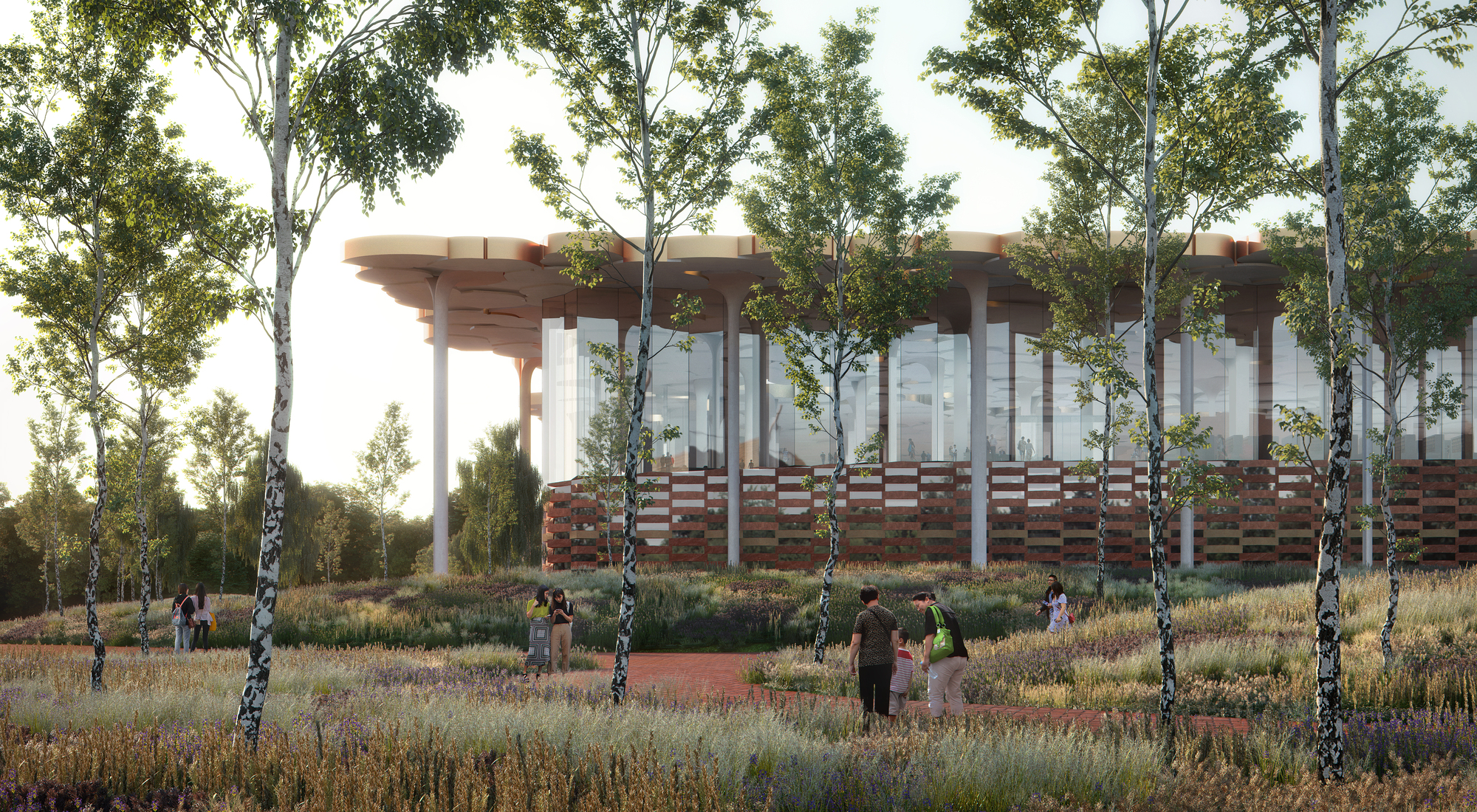
Openness and inclusion, as well as the Chinese Gingko forest, are the basis of Snøhetta & ECADI‘s project for the realization of the Forest of Knowledge in Beijing, a library that perpetuates the great Chinese culture in the scientific, human and cultural areas. The concepts are emphasized architecturally by the canopy of interlocking trees, whose sustainability is ensured by the solar panels with which they are equipped, which are also choose to simulate the “leaves”.
The trunks of the trees act as a cavedium, housing the technical systems necessary for the wiring of the library.
The Forest of Knowledge has a wooden floor that reproduces, thanks to the steps, the typical gradients of the bush, and the vertical walls are made with wide windows, which provide light inside while making the rooms visible from the outside. Construction, which began in 2018 when Snøhetta & ECADI won the call, will see its opening in 2022.
# Silk Trees in Tehran for the inclusion of deaf users, a project of Ashrafi and Zad
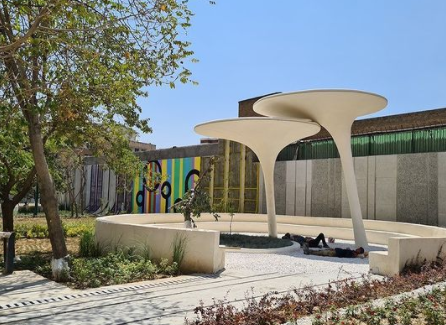
A public park designed by architects Raha Ashrafi and Marziah Zad specifically for deaf or hard-of-hearing users (but not only) can be found in Tehran.
The park is located next to a sports center for deaf or hard-of-hearing athletes, and includes circular seating spaced about 2.80 m distant, the perfect distance to facilitate visual dialogue between the hard-of-hearing users. The circular layout encourages interaction even among strangers, and protection from the sun is left to a combination of natural elements and curved artificial parasols, in a perfect urban mix.
Each corner of deaf-interaction is surrounded by vegetation, which protects users with little or no ability to process sudden “dangers.” The park is designed to be used by people with all types of abilities and, in addition, is all on level ground to accommodate visitors with movement limitations.
# Singapore’s vertical forest that produces energy
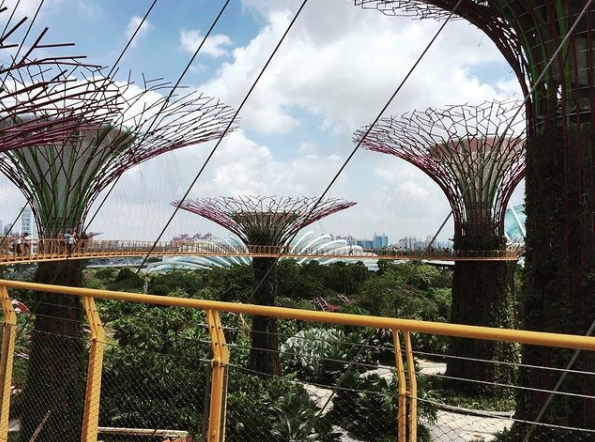
An impressive project by Grant Associates, Atelier One and Atelier Ten in Singapore, sees the installation of 18 structures in the shape of very tall trees, which stand out at Gardens by the Bay and are able, thanks to mechanical movements, to generate energy through solar power, recover rainwater and create air circulation to ventilate greenhouses.
The spectacle is amplified by night, with the super-colored artificial lighting of the structures, which attract many tourists even after sunset.
The tall trees of Singapore’s Gardens by the Bay are home for up to 220,000 types of plants, creating the evocative botanical garden and immense local biodiversity. Visitors are involved “on all levels” as the garden can be visited at street level but also up high, thanks to the beautiful and panoramic platform suspended between the structures, 128 meters long.
# Croatia’s bus terminal built without destroying existing greenery
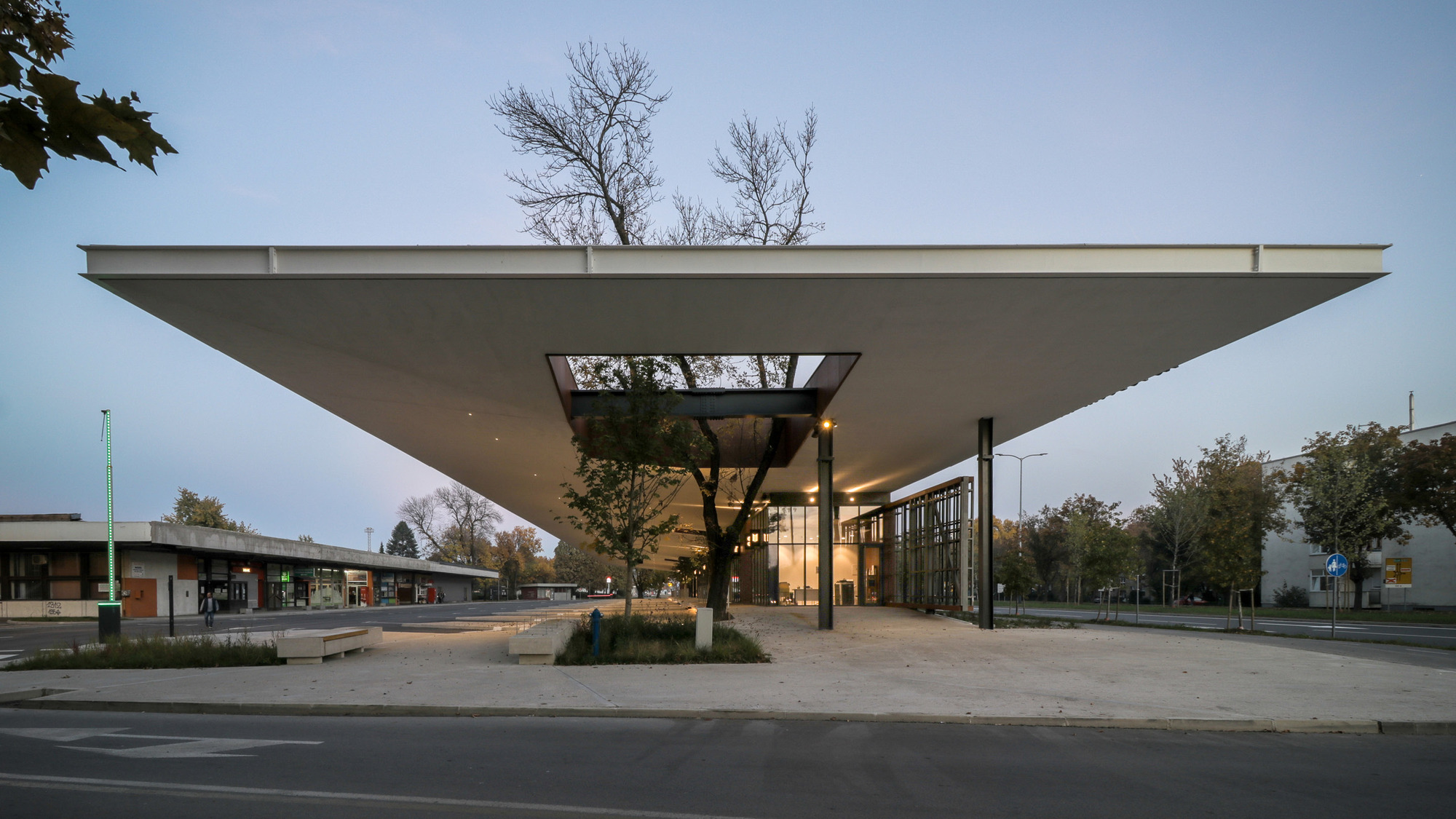
Just completed by SANGRAD+AVP, the Slavonki Brod Bus Terminal has a decidedly less attractive appearance than those seen so far, but has the merit of having been built around the pre-existing flora.
Camouflaged in part thanks to the canopy roof, which divides the plant into three main volumes, is adapted to the trees present thanks to the upper openings that will allow the trees a limitless grow in height, except for cuts dedicated to their maintenance.
In the whole project of the terminal transparency plays a fundamental role, guaranteed by the absolute absence of vertical walls, deliberately sought both for reasons of lighting and sustainability, and to allow vision and control, to avoid anti-social behaviors
Continue reading: TOP 5 CRAZIEST PROJECTS coming to Dubai within THREE YEARS
LAURA LIONTI


